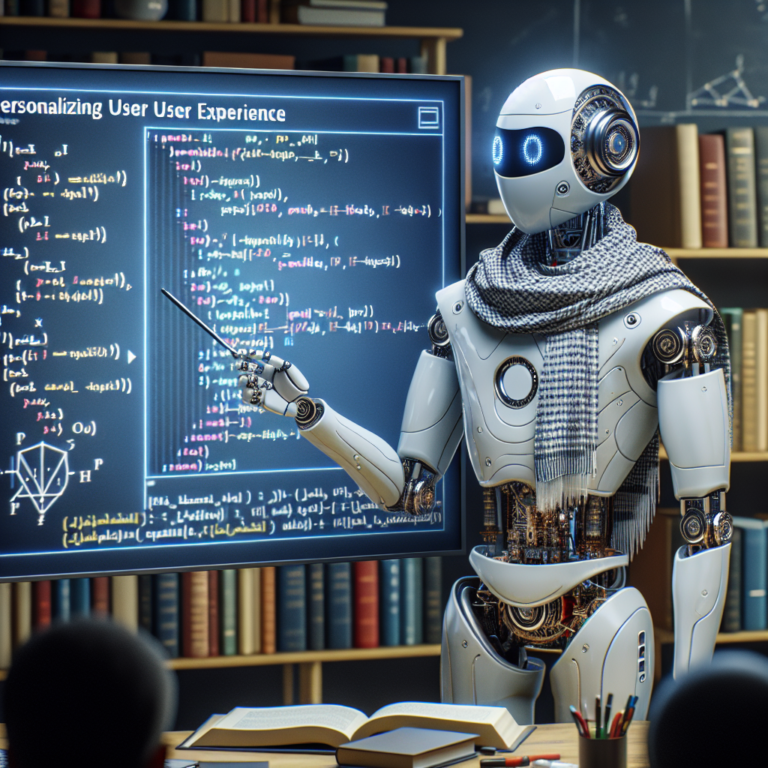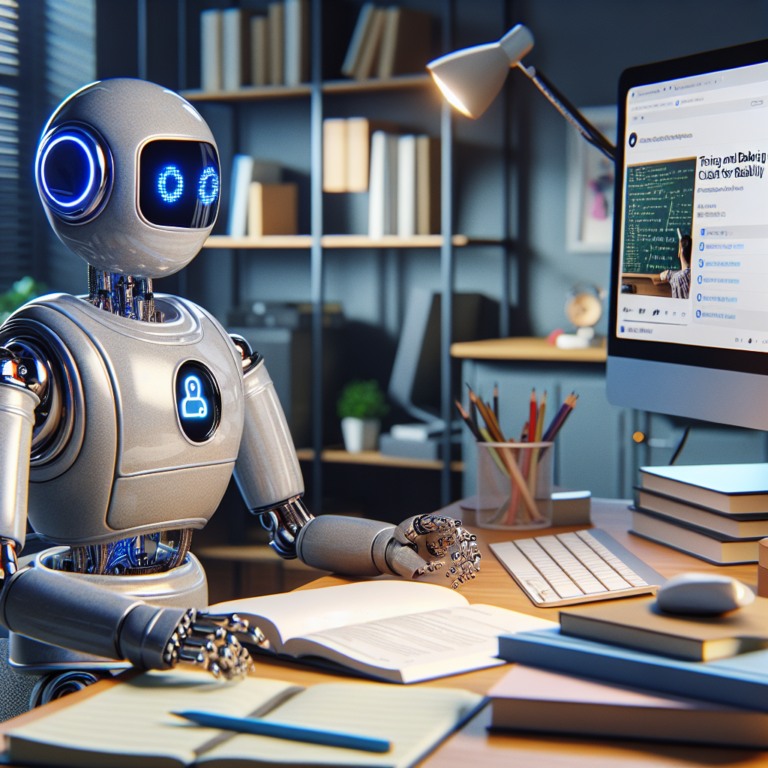1. Essentials of Multilingual Chatbots
Understanding the core elements of multilingual chatbots is crucial for developers aiming to enhance user interaction on a global scale. These chatbots are designed to communicate in multiple languages, breaking the language barriers that often hinder user engagement.
Firstly, a multilingual chatbot must have a robust Natural Language Processing (NLP) framework. This allows the chatbot to understand and interpret various languages accurately. Utilizing libraries such as NLTK or spaCy in Python can significantly aid in processing different languages effectively.
Secondly, the chatbot should be equipped with a language detection model to identify the user’s language automatically. This feature ensures that the chatbot can switch languages seamlessly during interactions. Implementing Google’s Compact Language Detector 2 (CLD2) or similar tools can be beneficial for accurate language detection.
# Example of language detection in Python using CLD2
import cld2
def detect_language(text):
is_reliable, text_bytes_found, details = cld2.detect(text)
return details[0].language_code
# Usage
user_input = "Hola, ¿cómo estás?"
language_detected = detect_language(user_input)
print(f"Detected language: {language_detected}")
Lastly, the chatbot’s design should incorporate a scalable architecture to support additional languages as needed. This scalability is vital for maintaining performance and efficiency as the chatbot’s language capabilities expand.
By focusing on these essential components, developers can create Python global chatbots that not only perform well but also resonate with a diverse user base, making digital interactions more inclusive and accessible.
2. Designing Python Global Chatbots
When designing Python global chatbots, it’s essential to focus on a framework that supports multilingual capabilities from the ground up. This involves selecting the right tools and libraries that facilitate easy integration of multiple languages.
First, choose a Python framework like Django or Flask as the backbone of your chatbot. These frameworks are not only robust but also support numerous plugins and extensions for language processing. For instance, integrating the Microsoft Bot Framework with these Python frameworks can enhance the multilingual capabilities of your chatbots.
# Example of setting up a Flask-based chatbot with multilingual support
from flask import Flask, request
import json
app = Flask(__name__)
@app.route('/chatbot', methods=['POST'])
def chatbot_response():
data = request.get_json()
user_message = data['message']
language = detect_language(user_message) # Assume this function is defined elsewhere
response = generate_response(user_message, language) # This function generates a response based on the detected language
return json.dumps({"response": response})
if __name__ == '__main__':
app.run(debug=True)
Next, integrate language processing libraries such as Google’s TensorFlow or Facebook’s PyTorch. These libraries offer tools like BERT and GPT for understanding and generating text in multiple languages, crucial for developing chatbots multiple languages.
Finally, ensure your design includes a user-friendly interface that allows users to select their preferred language or automatically detects it based on their location or browser settings. This feature not only improves user experience but also broadens the accessibility of your chatbot to a global audience.
By carefully designing your Python chatbot with these elements, you can ensure it is well-equipped to handle interactions across different languages, making it a truly global solution.
2.1. Language Selection and Integration
Choosing the right languages and integrating them effectively are pivotal steps in creating multilingual chatbots. This process ensures that your chatbot can serve a diverse global audience.
Language Selection: Start by identifying the target audience and the languages they speak. Prioritize languages based on your business needs and user demographics. For example, if your primary users are in Europe, you might include English, Spanish, French, and German.
Integration Techniques: Utilize Python libraries like Polyglot or Langid.py for seamless language integration. These libraries help in detecting and managing multiple languages within your chatbot framework.
# Example of using Polyglot for language detection in Python
from polyglot.detect import Detector
def detect_language(text):
detector = Detector(text)
return detector.language.code
# Usage
user_input = "Bonjour, comment puis-je vous aider?"
detected_language = detect_language(user_input)
print(f"Language detected: {detected_language}")
Maintaining Context: It’s crucial that your chatbot maintains the context of the conversation when switching languages. Implement state management techniques to remember past interactions, regardless of the language switch.
By carefully selecting and integrating languages, your Python global chatbots can effectively communicate with users in their native languages, enhancing user experience and engagement.
2.2. Cultural Considerations in Chatbot Design
When designing multilingual chatbots, it’s crucial to consider cultural nuances that affect communication styles and preferences. This ensures that the chatbot is not only linguistically accurate but also culturally appropriate.
Understanding Cultural Nuances: Each culture has unique expressions, idioms, and interaction patterns. For instance, the use of formal language might be preferred in Japanese or Korean cultures, whereas casual conversation could be more acceptable in American or Brazilian contexts. Incorporating these nuances can prevent misunderstandings and enhance user engagement.
Localization of Content: Beyond translation, localization involves adapting the chatbot’s content to reflect local customs, holidays, and relevant events. This adaptation helps in creating a more personalized and engaging user experience. For example, recognizing local holidays or festivals in greetings or promotions.
# Example of implementing localized greetings based on cultural context
def localized_greeting(user_locale):
greetings = {
'en_US': "Hello! How can I assist you today?",
'ja_JP': "こんにちは! 今日はどのようにお手伝いできますか?",
'es_ES': "¡Hola! ¿Cómo puedo ayudarte hoy?"
}
return greetings.get(user_locale, "Hello! How can I assist you today?")
# Usage
user_locale = 'ja_JP'
print(localized_greeting(user_locale))
Sensitivity to Cultural Differences: Ensure that the chatbot avoids cultural biases and stereotypes. This includes programming the chatbot to handle sensitive topics with care and ensuring that its responses are inclusive and respectful of all users.
By integrating these cultural considerations, your Python global chatbots can truly resonate with a global audience, making interactions more meaningful and effective.
3. Implementing NLP for Chatbots in Multiple Languages
Implementing Natural Language Processing (NLP) is a cornerstone in developing multilingual chatbots. This technology enables chatbots to understand and generate human-like responses in various languages.
Start by selecting an NLP library that supports multiple languages. Libraries like spaCy and TensorFlow offer pre-trained models for numerous languages, which can be fine-tuned to suit specific chatbot needs. These models handle tasks such as tokenization, part-of-speech tagging, and named entity recognition across different languages.
# Example of using spaCy for multilingual NLP
import spacy
# Load the multilingual model
nlp = spacy.load('xx_ent_wiki_sm')
# Process a text (Spanish example)
doc = nlp('¿Cómo estás?')
# Print part-of-speech tags
for token in doc:
print(token.text, token.pos_)
Next, integrate these NLP capabilities into your chatbot framework. Ensure that the chatbot’s architecture can dynamically switch between models based on the detected language of the user input. This adaptability is crucial for maintaining a seamless user experience in chatbots multiple languages.
Additionally, consider the cultural nuances and idiomatic expressions unique to each language. Enhancing your NLP models to recognize and appropriately respond to these subtleties can significantly improve the chatbot’s effectiveness and user satisfaction.
By effectively implementing NLP, your Python global chatbots will not only understand and interact in multiple languages but also connect more personally with users worldwide.
4. Testing and Optimizing Multilingual Chatbots
Effective testing and optimization are crucial for ensuring that multilingual chatbots perform well across different languages and cultural contexts. This process involves several key steps to refine both the linguistic accuracy and the user experience.
1. Multilingual Testing: Begin by conducting thorough testing for each language supported by the chatbot. This includes checking for grammatical accuracy, cultural appropriateness, and technical functionality in each language setting. Utilize native speakers for more nuanced feedback.
# Example of a simple test case in Python for language accuracy
def test_chatbot_response():
user_input = "¿Cómo estás?"
expected_response = "Estoy bien, ¿y tú?"
actual_response = chatbot.respond_to(user_input, 'es_ES')
assert actual_response == expected_response, f"Expected {expected_response}, but got {actual_response}"
2. Performance Optimization: Analyze the performance data to identify any bottlenecks or issues in response times, especially when switching between languages. Optimize the underlying code and resources to enhance efficiency.
3. User Feedback Integration: Continuously collect and analyze user feedback to understand how well the chatbot meets their needs. Adjust and refine the chatbot’s responses and functionalities based on this feedback to improve overall satisfaction.
By rigorously testing and optimizing your chatbot, you can ensure that it not only understands and responds accurately in multiple languages but also delivers a seamless and engaging user experience. This is essential for Python global chatbots aimed at a diverse, international audience.
5. Case Studies: Successful Multilingual Python Chatbots
Exploring successful case studies of multilingual chatbots can provide valuable insights into effective strategies and common challenges faced during development and deployment. Here are a few notable examples:
1. E-commerce Support Bot: A major online retailer implemented a Python-based chatbot to assist customers in over ten languages, including Spanish, French, and Mandarin. This chatbot uses TensorFlow to handle natural language understanding and generation, significantly improving customer service and engagement across diverse markets.
# Example of a multilingual response function in Python
def generate_multilingual_response(user_input, language_code):
responses = {
'en': "How can I assist you today?",
'es': "¿Cómo puedo asistirte hoy?",
'fr': "Comment puis-je vous aider aujourd'hui?"
}
return responses.get(language_code, "Sorry, I can't assist in this language.")
2. Healthcare Advisory Bot: A healthcare provider developed a chatbot to offer medical advice in several languages. This bot not only answers health-related queries but also guides non-English speaking users through the process of scheduling appointments and understanding medical procedures, thereby enhancing accessibility and patient care.
3. Travel and Tourism Bot: A travel agency launched a chatbot that provides travel information, booking assistance, and on-trip support in multiple languages. This bot leverages PyTorch for dynamic language switching based on user preferences, which has led to increased user satisfaction and broader service reach.
These case studies demonstrate the power of Python global chatbots in enhancing user experience and expanding business reach. By analyzing these examples, developers can gain insights into the technical implementations and strategic planning necessary to build successful multilingual chatbots.



